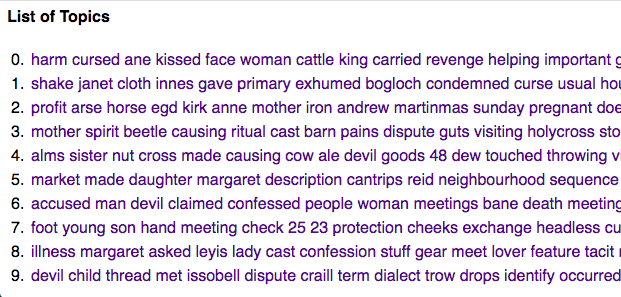A Witch's Calendar, 1563-1736
a digital humanities project
by Isabelle Briggs, MLIS '19
Some Conclusions
✶
The central question of this project was to determine what, if anything, could be learned about Scottish calendrical folk customs from data on witch trials of the early modern era. The answer to that question is, “Not much at the moment.” This is, by my own estimation, due to a couple options: the state of the data and the methods for examining it are insufficient, or I, as the researcher, have not properly mined the data. It is possible that both explanations are correct! Here are the results I was able to come up with.
Part of the reason I chose to look more closely at cases related to calendar customs was to whittle down the dataset from around 3,800 to just around 140 cases. The downside of this was that in certain cases it left too little data to work with. For example, there were only four cases associated with the holiday of Beltane, which was really too little to do any qualitative analysis with because there weren’t enough record to observe any trends across them. Halloween was the custom most reported, with 31 accusations referencing the holiday. Since there were so many Halloween records, I was able to do more analysis with that data.

A cloud produced by Voyant of the most commonly used words in the case notes for all the Halloween records.
 This is a list of topics found in the case notes for all Halloween cases, made with the Topic Modeling Tool.
This is a list of topics found in the case notes for all Halloween cases, made with the Topic Modeling Tool.
This is a link to a chart depicting attribute totals for all cases related to Halloween.
This is another chart showing attribute totals for Halloween cases in Aberdeen, the location with the highest incidence of Halloween case.
✶